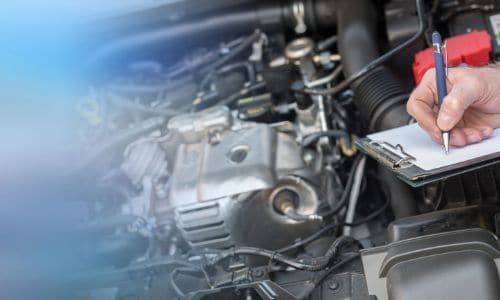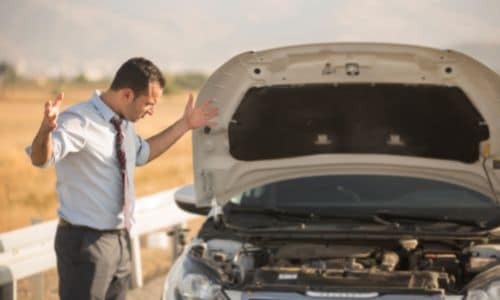Road trips are perfect for the mind, body, and soul. They can take you to places unknown, act as a perfect friends trip, date, or family bonding exercise, and are the root of many fond memories to treasure for years. However, you don’t want your good memories to be sullied by a vehicle breakdown when you least expect it. That’s why you should undertake preventative maintenance before embarking on a road trip.
What are the maintenance items you should focus on before a road trip? There are a few, including a comprehensive check of your car’s lights, tires, mechanicals, a full service, and a diagnostic scan, to name the critical tasks. These are all activities that can be carried out at a workshop — but if you’re interested in doing some of them by yourself, we’ve got a great little suggestion to help you.
GAIN MORE CONTROL OF YOUR CAR WITH THE CARLY FEATURES
Check the exact pricing of Carly for your car brand!

Fast International Shipping with DHL

14 days adaptor return policy

Excellent customer support

Lifetime warranty in the hardware
SEEN IN
Start with Checking Your Lights and Tires

Your lights are a critical piece of kit, and it’s illegal to drive a vehicle with certain lights malfunctioning. You should check your headlamps in the full and dipped beam modes, foglamps, turn signals and hazard lights, brake lights, license plate lights and reversing, or back-up lights. You can perform these checks by yourself, although you may need assistance to check the brake and back-up lights.
The next item you should not miss checking is your tires. Tires are the sole contact patch between your vehicle and the road, and all the trick tech in the world can’t help you when your tires lose their grip, or worse, blow out. Start by visually inspecting them for damage such as cuts, tears, punctures, blisters, bumps, and other signs of damage. There are certain types of tire damage that can be repaired, and other types that require replacement of the tire.
While you’re at it, it’s a great time to check how old your tires are. Tires break down and degrade over time, and the accepted lifespan of a tire is five to seven years. There’s a helpful little four-digit code on the sidewall of each tire, where the first two digits refer to the week of production, and the last two digits refer to the year of production. So a tire that reads 4412 was made in the 44th week of 2012, and is nearly ten years old; thus it’s not safe to drive on and should be replaced.
Perform a Full Mechanical Check
You should perform a full mechanical check of your car before undertaking a road trip. This includes checking your braking system, suspension, engine, transmission and electrical system for any potential faults that could leave you stranded, or endanger your life. This is best done by a competent workshop, either by your vehicle brand’s appointed agent, or a third party.
Perform a Full Service

You may be wondering why we’re asking you do this, as your car typically has a clearly defined service interval. In fact, if you’ve just serviced your vehicle and have barely put 1,000 miles on it since then, you can just skip this step.
However, if your next service is due soon, think about how many miles your road trip is going to rack up. Be sure to leave a healthy margin for any diversions, additions and wrong turns. If you are close, or over your target service mileage when your road trip is over, it pays to do the full service a little early, before your road trip. Better safe than sorry.
A full service typically entails changing of all the oils and filters, including but not limited to engine oil and filter, engine air filter, transmission oil, fuel filter, differential oil, power steering oil, brake fluid flush, and engine coolant flush. Your vehicle will also undergo lubrication at defined points, and you may receive a full wash, wax and interior detailing too. A full service may also include a diagnostic scan.
What Is a Diagnostic Scan?
Modern vehicles come with several computer control units for a myriad of systems, that are connected with kilometers of wire, and have hundreds of sensors, input, and output devices. This means that there’s a lot that can go wrong electronically, as well as a vast avenue for fault diagnosis.
The OBD, or On Board Diagnostics standard was introduced primarily as a method of emissions control and fault reporting, but has morphed into a comprehensive vehicle control and diagnostics interface in its current iteration of OBD2. If you are driving a vehicle produced after 2005, it definitely has an OBD2 port situated inside the cabin, which you can plug a diagnostic device into, or take your vehicle in to a workshop to have a diagnostic scan conducted on it.
What Will a Diagnostic Scan Tell Me?

At the very basic level, a diagnostic scan will inform you of any major faults in the primary systems of your car, such as the engine control system, braking system, body control module and safety system. At an advanced level, it can self-diagnose faults in any system on your vehicle, as well as allow you to customize various aspects of it, known as coding.
Can I Do a Diagnostic Scan Myself?
Yes you can. You just need a compatible device that will plug into your vehicle’s OBD2 port and show you the relevant information. There are a large variety of consumer-grade devices to choose from. Some devices are stand-alone ones, others are software that you can install on your laptop via a cable connection to your car, and our favorite is the wireless dongle that connects to your smartphone and a dedicated app.
There are hundreds of such devices on the market. However, you should ideally pick a hardware and software combination from the same manufacturer, as mixing and matching is not a good idea. With mixing and matching you may encounter data errors, slow and inaccurate diagnosis, or at the worst case scenario, the hardware and software may not talk to each other, leaving you with a useless solution and a waste of money.
Our Pick — Carly

If you’re looking for a way to conduct diagnostic scans before you hit the road, in order to weed out any issues, we’d recommend Carly. Carly is a dedicated solution that encompasses the Carly Universal OBD Scanner, as well as the Carly app. The Carly app can be downloaded from the Android and Apple app stores, and wirelessly communicates with the Carly Universal OBD Scanner, a device so small that you can leave it permanently plugged into your vehicle’s OBD2 port if you wish.
Carly offers smooth and powerful diagnostics with an easy-to-understand interface, as well as a wealth of additional features, such as coding, maintenance reset functions, and the Carly Used Car Check for verifying mileage on used cars, in order to detect doctored mileage figures. Carly costs under $100 for the entire solution, and represents tremendous value for money when you consider that a diagnostic scan at a workshop can cost between $30 and $80. Choose Carly for peace of mind.

